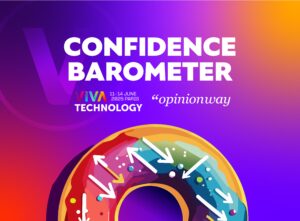Blackberry announces its first AI-empowered Zero Trust Network Access (ZTNA) product

Today it has been announced that BlackBerry has built out its Extended Detection and Response (XDR) capabilities with new cybersecurity innovations.
BlackBerry Limited today announced BlackBerry® Optics 3.0, its next-generation cloud-based endpoint detection and response (EDR) solution and BlackBerry® Gateway, the company’s first AI-empowered Zero Trust Network Access (ZTNA) product. Rooted in a prevention-first and AI-driven approach, BlackBerry’s new endpoint and network security capabilities will help differentiate BlackBerry’s extended detection and response (XDR) strategy.
According to Forrester1, “XDR unifies EDR with other security and business tooling. EDR gives granular visibility and provides precise response actions for endpoints. However, it lacks visibility and response actions for other parts of the business, like non-endpoint related network telemetry, email behaviours, and cloud environments, leaving security analytics to pick up the slack. XDR provides needed visibility and control to other parts of the business through integrations that combine EDR data with other types of telemetry.”
The new cloud-native architecture and Advanced Query capability that underpins Optics 3.0 is integral to BlackBerry’s XDR strategy. With Optics 3.0, Edge AI threat detection and automated response capabilities execute directly on the endpoint device so an incident can be mitigated in near real-time. The resulting telemetry, alert, and forensic data are stored in the cloud data lake and non-endpoint related telemetry data. Security professionals can then query and analyse the multiple sources of telemetry data to gain greater visibility and context into an organization’s security environment.
BlackBerry Gateway marks the company’s entry into ZTNA for both SaaS and on-premises applications. Built with a “Prevent First and Protect First” approach, Gateway’s Zero Trust architecture helps organizations reduce network access risk by assuming every user, endpoint, and network is potentially hostile until identity is authenticated. As the company builds out its XDR architecture, Gateway would provide ZTNA telemetry data that would be added to the cloud data lake.
“We are delighted to see our vision for an extended detection and response architecture take shape,” said Billy Ho, EVP of Product Engineering, BlackBerry. “Traditional endpoint security alone is not enough to tackle the sophisticated threat landscape. Our end-to-end approach to cybersecurity is deeply rooted in Cylance AI and ML to provide enhanced visibility and protection against current and future cyber threats. As part of our XDR roadmap, we will continue to add new products and additional sources of security telemetry, such as user behavior, identity, network, data, application, and cloud to the Optics 3.0 cloud data lake. This will enable data correlation, automated workflows, automated threat hunting, to enable more efficient and effective detection and response.”
READ MORE:
- Business security remains resilient in the wake of coronavirus, say CISOs
- Market Access for MedTech: Speakers now announced!
- Why customer conversations are vital for brand survival in a post-COVID-19 world
- What can corporates learn from digital transformation in the COVID era?
When integrated with the BlackBerry® Protect advanced AI-powered endpoint security product, BlackBerry Gateway provides a comprehensive defence against threats targeting devices, networks, and user identity. BlackBerry Protect leverages AI to prevent known, unknown, and zero-day threats, while BlackBerry Gateway ensures trusted and healthy devices only access business networks.
For more news from Top Business Tech, don’t forget to subscribe to our daily bulletin!
